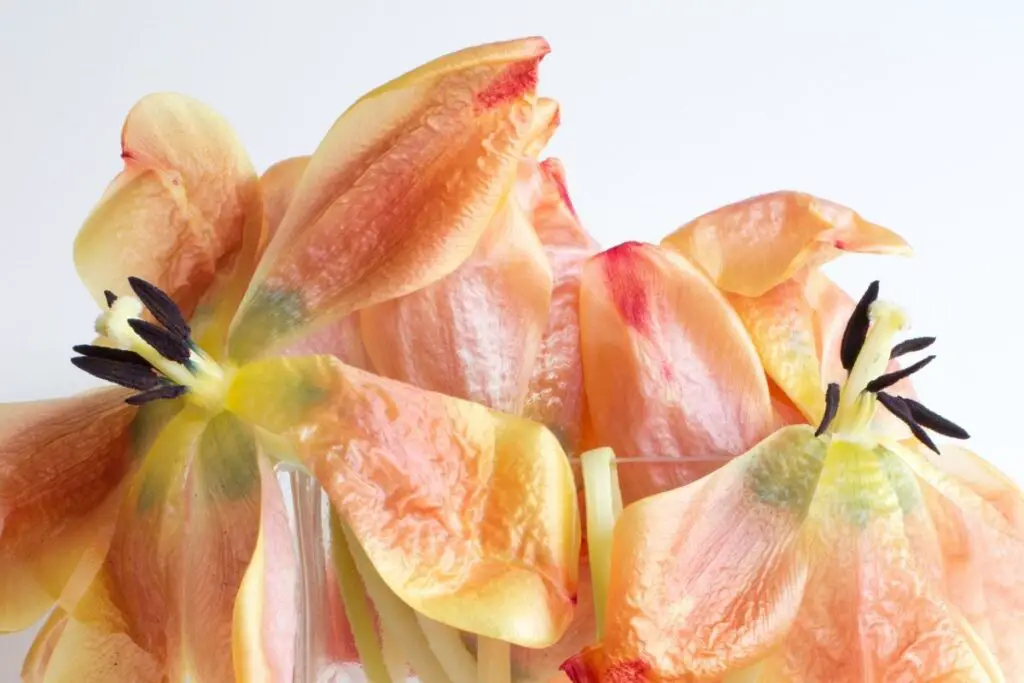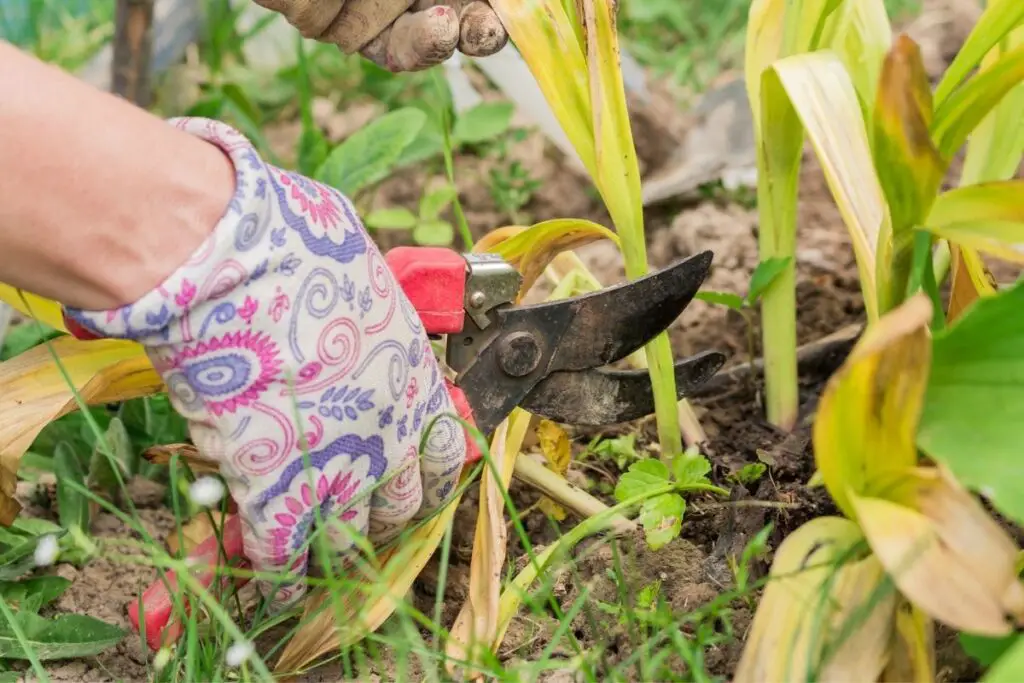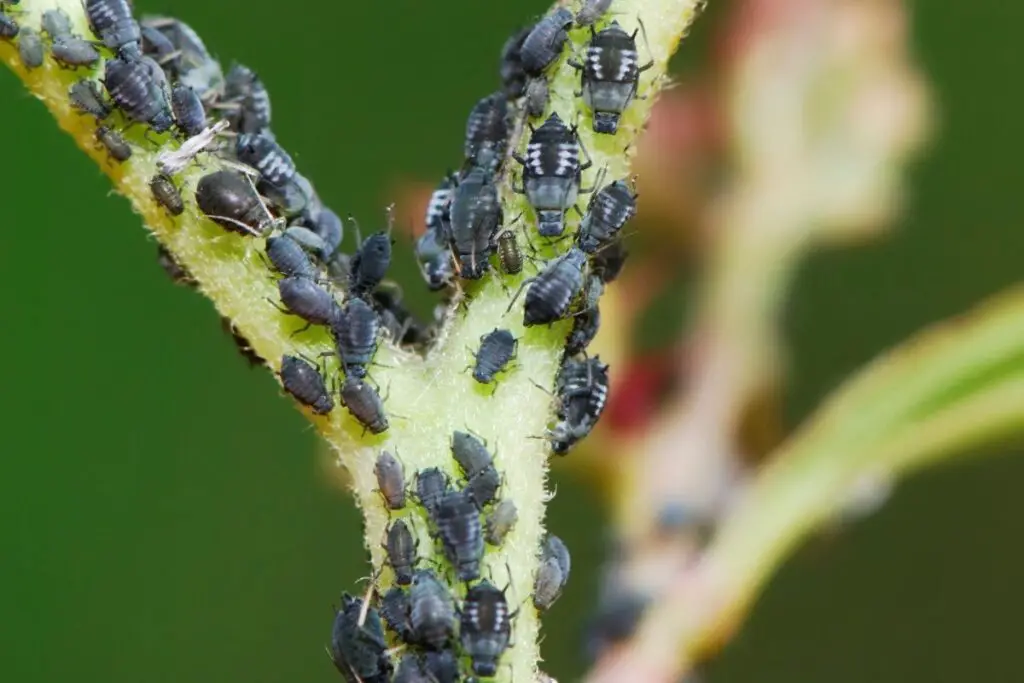Tulips are famous for their wide range of colors and straight stems. Thus, you will never enjoy seeing them become floppy day by day. Even after taking care, it is very discouraging to see the tulips flopping over, and more frustrating is not knowing the reason behind the situation.
In this article, we shall understand why are my tulips floppy and how you can fix the same.
Tulips go floppy because they don’t receive enough light or water, the temperature is not ideal, insufficient nutrients or pests and diseases have infested them. Providing your tulips with proper care and living conditions and takings steps to get rid of pests can help your tulips recover.
This article will explain the reasons behind floppy tulips in detail and how you can fix and prevent floppiness in the tulips. So, without further delay, let’s start.

Why do tulips go floppy?
Tulips stay strong, healthy, and stand straight when they receive all their requirements. A good amount of sunlight, moist and fertile soil will help the tulips to stand straight instead of getting floppy.
Insufficient light

Tulips require 6 hours of sunlight per day for healthy growth. A good amount of light will help them gather enough energy for photosynthesis, encouraging them to stand straight and bloom profusely.
Low light levels will not allow the plant to gather energy for them. Without good energy, the plant will fail to stand straight and go floppy.
Tulips tend to move according to the sunlight. Tulips are phototropic plants, and they will always move towards the light. So, in search of sunlight, they might bend downwards, becoming floppy.
Solution: Choose a site where they can receive enough light. Avoid sites where there are tall buildings or trees around.
They can block the sunlight from reaching the tulip bed. Select a site where sunlight falls the whole day. This will make the tulips perk up a bit.
Tulips need right temperatures
Tulip bulbs need a chilling period before you plant them and a cold temperature for a few weeks before they flower.
But tulips will also need a warm temperature once they come above the ground and flower. At that time, they will not be able to bear cold or chilling temperatures.
Excess cold can hurt the cell wells of the tulips and damage them. When this happens, the tulips lose the water from the stems, making the stems lose their rigidity and become floppy.
Once the freezing temperature reduces, these cell wells start functioning again if the damage is not that bad. Once the tulips get a warm temperature, they will start standing upright again.
Solution: The tulips getting cold weather even after growing out of soil and flowering depends upon the weather conditions, which is not in our hands.
But, planting them in a site where they can receive a good amount of sunlight might solve the problem. Receiving the warmth of the sun might help the tulips to perk up and stand straight.
Another way to protect them from cold is by adding mulch to the soil bed. Add a 2-inch layer to mulch to the soil bed. This will help the tulips to keep the soil bed a little warm and insulate them from excess cold.
Looking for gardening supplies? We have tested 100's of products before recommending them to you guys. Check out our best pick below:
| Image | Gardening Supplies | Best Price? |
|---|---|---|
 Top
Top Top
Top | Raised Garden Bed Kit | Check On Amazon |
 | XLUX Soil Moisture Meter, Plant Water Monitor, Soil Hygrometer Sensor for Gardening, Farming, Indoor and Outdoor Plants, No Batteries Required | No Results |
 Top
Top Top
Top | 82 Pcs Garden Tools Set and Extra Succulent Tools Set | Check On Amazon |
 | Joeys Garden Expandable Garden Hose with 8 Function Hose Nozzle, Lightweight Anti-Kink Flexible Garden Hoses, Extra Strength Fabric with Double Latex Core, (50 FT, Black) | No Results |
 Top
Top Top
Top | Dual Chamber Compost Tumbler | Check On Amazon |
 Top
Top Top
Top | Sunnyglade Plant Stakes | Check On Amazon |
 Top
Top Top
Top | Organic Cold Pressed Neem Seed Oil | Check On Amazon |
 Top
Top Top
Top | Mighty Mint Gallon :-Insect and Pest Control Peppermint Oil | Check On Amazon |
 Top
Top Top
Top | Scotts DiseaseEx Lawn Fungicide | Check On Amazon |
 Top
Top Top
Top | Jacks Classic 20-20-20 All Purpose Fertilizer | Check On Amazon |
 Top
Top Top
Top | 30,000 Seeds Pollinator Attracting Wildflower Mixture | Check On Amazon |
 Top
Top Top
Top | Survival Vegetable Seeds Garden Kit-Over 16,000 Seeds | Check On Amazon |
Tulips got battered
We cannot control the weather at any cost. Thus, the tulips get floppy due to external factors like hail, sleet, heavy rains, and strong winds.
This especially happens when spring and summer begin, and along with the month comes a heavy roaring climate or hail, heavy rain, and wind.
However, the tulips will again stand up when the weather gets back to normal. When the spring and summer arrive, with the sun’s warmth, they will stand straight, provided the stems do not get broken.
Solution: There is no solution to this. But, yes, one thing you can do. You can protect them from these heavy winds and rains by creating barriers and shade above and around them.
Trim off the fade blooms

When the tulips bloom, after some weeks, they will fade and automatically wilt. Once the flower fades, the leaves and stems too will start fading. As a result, the tulips will become floppy when they fade.
You can pinch off the flowers. But, as the tulip bulbs will keep gathering energy and nutrients from the leaves and stems, you should not pinch them off until they turn brown and die.
There is no fixation here. It is natural. Once the stems and leaves turn brown and die, you need to dig up the bulbs and store them for planting and flowering next year.
Temperature stress
When tulips grow in climates of hardiness zones 4 through 10, they love and enjoy the morning sunlight. But of course, they will require some amount of shade during the harsh afternoons.
Tulips cannot tolerate extreme temperatures, be it hot or cold. They will turn floppy if they get temperatures above 73°F or below 30°F.
Planting the tulip bulbs too early in the fall months can help them to sprout out.
But then a sudden drop in temperature in your region, for example, frost weather, will make the tulips flop over. Eventually, the plant won’t be able to tolerate much and die.
Solution: You can plant the bulbs in the late fall. This can help the tulips remain dormant until spring. It will save the tulips from frost and getting floppy.
Also read: What Temperature Do Tulips Need? (+Growing Them At Different Temperature)
Fertilization

Tulips need much less amount of fertilizer compared to the other flowering plants. As these are bulb plants, the bulbs already have lots of fertilizer stored inside them.
However, the plant might get floppy once all these nutrients are utilized, and few nutrients are left. Floppy tulip is a sign of nutrient deficiency.
Soil is also responsible for floppy tulips. While planting, the materials you add to the soil bed consist of enough nutrients. But over time, it gets depleted.
Solution: To avoid floppiness, you can boost the bulbs with fertilizer beforehand to still have the nutrients in them. It will save them from lack of nutrients, avoiding floppy tulips.
Moreover, to make the soil bed nutritious, you can add organic matters like compost to increase the nutrition level naturally. Good nutrition levels will prevent the tulips from getting flopped over.
Also read: What Is The Best Fertilizer For Tulips? (Organic+Inorganic)
Watering
When the tulips flop over, it is a clear sign that they are thirsty. They don’t need much water. But, they will require water to remain moist. They will not tolerate prolonged drought conditions.
Solution: As a thumb rule, you should water the tulips once a week with 1-inch water. This will be enough to keep them evenly moist. When your underwatered tulips turn out floppy, you can perk them up immediately by using cold water.
Even though the cold water trick will work quickly, this can harm the tulips. Don’t continue doing this. Water the tulips always with normal, room temperature water afterward.
Also read: How Often Do Tulips Need To Be Watered? (Tulip Watering Needs )
Lifespan
The tulips will naturally start to become floppy and droop down when their life cycle ends.
When you find out they are going floppy, despite doing everything right and there are no signs of damage, the bulb has used all its energy to produce abundant flowers.
When you see the tulips turning floppy, wait for a little. Don’t take any immediate actions. The bulbs gather energy from the green leaves and stem to follow their natural life cycle.
The green leaves are still capable of performing photosynthesis and gathering energy from sunlight. This energy is further gathered by the bulbs so that they can flower abundantly in the coming year.
However, you can remove the faded flowers. Don’t remove the leaves and stems until they fade, turn brown, and die.
There is no fixation available for such natural floppiness in tulips. Once the leaves die, you can dig up and store the bulbs for next year’s planting.
Bugs infestation

Tulips being attacked by pests will make them floppy. Little floppiness is an early indication of pest attack.
Most pests are bugs, like aphids, bulb mites, and spider mites that reach the tulips when in favorable conditions. They suck out all their juices and make the plant weak and floppy.
As these are sap-sucking insects, they feed on the plant sap. When the plant becomes tired, they don’t function properly, for which they fail to perform good photosynthesis.
Due to reduced photosynthesis, the tulip stems tend to bend and flop over.
Solution: There are a lot of solutions available to get rid of pests. But, it would be best to get rid of them as soon as possible.
If the infestation increases, it can quickly spread and affect the top part of your tulip bed.
- You can shower your plant with reasonable force. Make the pressure tolerable for the tulips. This will wash away the pests.
- You can handpick them to remove the remaining pests.
- To ensure they are completely off your tulips, you can spray neem oil to the plants, especially more to the infested area. This will also prevent any further pest or fungus attacks.
- You can use insecticidal soaps like castile soap to remove them. Mix 5 tablespoons of the liquid soap per gallon of water. While using this, first try testing it on a small portion in the infected area. If the result is positive, continue using the solution to other infected areas.
- If you want some natural way, you can release ladybugs in your tulip bed. They will feed on the aphids and feed on all of them. This will make sure all the aphids are dead.
- If the infestation is severe and the condition of the plant is deteriorating, killing them is necessary. You will need chemical insecticides and pesticides to remove them and prevent their further reappearance. Read the instructions carefully and then use them according to the recommended amount or as required. Avoid over-using it, or else instead of curing, you will injure the plant.
To prevent bugs:
- Stop frequent disturbance in the soil bed.
- Add compost to your tulip to make it nutritious. A healthy soil won’t be much attractive to bugs.
- Avoid overwatering or under-watering the tulips. A stressed plant attracts bugs.
Also read: Bugs On Tulips: (Common Pests, Identification+How To Get Rid)
Some care tips, in brief, to keep the tulips healthy and not floppy
- Make sure the tulips receive 6 hours of sunlight per day.
- In extreme temperature and climate exposures, try to protect them by creating artificial shade or protection barriers or adding mulch to the bed.
- Water the plant every week with 1 inch of water to keep them evenly moist. Thirsty tulip is one of the common reasons behind a floppy tulip. Avoid watering them in summer dormancy.
- They don’t require much fertilizer, but you can fertilize them in the fall, at planting time, to boost the bulbs with nutrients for further flowering.
- Check out for any signs of bug damage. Treat them if caught early.
Final words
When the tulips get floppy, there is no need to panic over it. Your plants are not dead. With some care and attention, you can perk them up like before.
Don’t keep them thirsty for long as they don’t like prolonged droughts. Don’t overwater them either. Give them water just to keep them evenly moist all time. Make sure they receive a good amount of sunlight per day. Select an ideal site for planting them.
Observe them daily to keep a watch for any bug infestation. Floppy tulip is one indication of their attack. Whenever you see such a sight, check out for infestation and fix it quickly.
With good care, your tulip garden will always remain filled with multiple pretty colors.
Source: Wikipedia, North Dakota Stae University, The Royal Horticultural Society.
